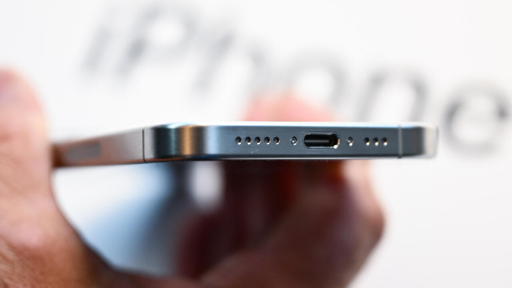Suck it micro USB, mini USB, and lightning! 🪫🔋
Can we bring back the charging as well, and not just the USB cable… Oh, and while you’re at it, screws instead of glue, to replace batteries would be awesome.
Thx!
There’s a rule coming into effect in 2027 that enforces user replaceable batteries for devices in the EU. https://www.pcmag.com/news/eu-smartphones-must-have-user-replaceable-batteries-by-2027
while 2027 is better than nothing, I still wonder why it took them so long. Glue in smartphones has been around for probably a decade now.
Also, I think, anything that has a battery, should be user replacable… even teeny-tiny earbuds.
To allow the manufacturers to adapt and phase out?
For USB sure… it’s kinda “newish”. But, I mean, they could’ve intervened much sooner, when glue became the standard for assembling phones.
The delay on USB was to let the industry standardize on its own. The EU hinted to all manufacturers that they needed to standardize. Then it outright stated. Then because Apple was run by pricks, the EU had to legislate USB-C to force it.
Now, when something better comes along (like when mini USB gave way to micro USB, then to USB-C), there will need to be new legislation to allow that connector.
Now for those swappable batteries
Including cars.
Drive in, swap non-proprietary batteries with an autoloader, drive out. Done.
Yes and no. No need to hot swap massive EV batteries. Rapid is fast enough. But yes so the EV can be upgraded. The batteries go obsolete quicker than they degrade. So make it so we can swap the batteries and keep the rest running. In fact, just right-to-repair the whole car. In fact, the whole everything!
In fact, just right-to-repair the whole car. In fact, the whole everything!
Boy, that escalated quickly
But yes, please.
Hot Swapping batteries is actually surprisingly good for the life of the battery if done well.
Rapid charging the battery does do permenant damage over time especially if you fast charge every time. Whereas if you can hot swap a battery and have a suitable stockpile of them you can trickle charge the battery over a couple of hours instead of 30 mins and prolong the overall lifespan of the battery. Even slowing down the charge rate to 1 hour reduces wear on the battery significantly. Plus, without time pressure from a customer, more time could be taken to replace damaged cells or blocks in a battery so that one pack will more effectively use the whole battery up instead of throwing away perfectly good cells.
See, for me, I rapid charge like once a month. All the rest of the time I use my home charger or even a granny lead. 10A granny charging is absolutely fine overnight. But for the size of the E-Berlingo, the battery is a bit small and I know all kind of new batteries are coming. More kWh for the same weight/size, less degradation, safer, etc etc. If I knew the car was designed with battery replacement in mind, I’d worry a lot less about it being obsoleted prematurely. These cars are all black boxed stuck together. It’s not built with repairing and upgrading in mind.
@jabjoe
At least ‘some’ minimal standardisation so we can exercise the #righttorepair
@DrownedRats @technologyExactly. I want things, especially expensive things, built to be repaired and upgraded. Not vendor locked and with built in obsolescence.
The batteries don’t live in isolation. There are other pieces that are dependent, whether for basic function or for calibration.
Example: Chevy issued a recall for mislabeling some Bolts as N2.1 vs N2.2. The fix is a sharpie to fix the label, and “reprogramming the Hybrid Powertrain Control Module 2”. I could find no information on either of these chemistries. Dropping in a LiFePO4 would require at least the same, and possibly more.
Now, if you’re suggesting simply swapping a matching replacement part (obsolete as it might be), then I’m on board with that
Oh totally, I have a E-Berlingo which basically an ICE converted to an EV, so there is all kind of compromises.
But batteries do improve and an old existing EV can be improved battery. Example: https://evsenhanced.com/aftermarket-battery/
But the economics is much harder if batteties aren’t unique to each EV. (They aren’t completely of course, the guts of my E-Berlingo are shared across a number of others.) EVs, like a lot else, should be designed with maintaining and upgrading in mind. Especially with parts like batteries which are in such evolutionary flux.
That is something that I wish would come true. This would also open EVs to the industry in some new ways. Currently it kinda sucks if you have machines that have to be able to run the whole day without big interruptions. When you’re able to just swap the batteries in like 5 Minutes this machines don’t have to rely on fossil fuels that much and are open to be replaced by electric ones.
What I’m thinking about are machines like tractors for farming. During the summer it happens that they are running for 8+ hours without interruptions. Building a battery this big will be quite challengening. However, if you’re able to swap out the batteries after like 2 hours and then continue with work you effectively solved one of the biggest problems with not that much of a hassle.
One of the benefits of EVs is we can get rid of a lot of infrastructure. Everywhere already has electrical so home and destination chargers are a minor add on and it’s only superchargers that are new infrastructure. Meanwhile the entire gasoline and oil refining, distribution, and tens of thousands of gas stations can just go away, along with their associated pollution.
Swappable batteries may sound cool but they’re less edficient plus now we have to build up a huge new set of infrastructure agai, we have to standardize batteries, and we can’t build them into structural parts. The only real advantage is speed but that’s not much advantage if you need to drive somewhere. I’ve never had to charge more than 25 minutes at a supercharger, so swapping a battery is only convenient if it’s at most ten minutes more away. Then you’re also assuming there will be more more battery and charger advances, such as those solid state batteries that a couple vendors claim are already in production, such as 800v charging that a few vehicles already can do, such as the latest Superchsrgers that can charge faster than any car can accept so far, or the semi chargers that have a few built out.
Long before you could build out a huge new infrastructure for seappable batteries and standardize cars around it, we’ll already have charging improvements that will make seappables irrelevant. You could argue they already are irrelevant in some areas
While 25 mins doesn’t sound terrible you have to consider throughput. Long lines, waiting for chargers could become an issue if adoption takes off, and if I ever drove by a set of chargers that was full up and more people waiting that’d probably put me off from buying one.
Maybe but so far:
- I usually charge overnight at home
- I’ve never waited in line at a supercharger.
The destination chargers at work do get a line but we coordinate over slack so you never have to actually wait.
The trick is to get those home chargers deployed everywhere. This is what actually decided me on the futilebess of swappable batteries. Almost everyone could use a level 1 charger, but even a full level 2 charger is the same as a stove circuit or an air condioner. It’s just not a big deal for most people’s electrical service and level 1 can be anywhere. Look at how difficult it’s been to get these deployed despite them being so much cheaper and simpler than what you’re proposing. How will we possibly spend tens to hundreds of billions and decades to build out swappable battery infrastructure if a few billion in charging circuits to mostly existing service is so difficult?
Who benefits from seappable battery infrastructure? Really it’s mostly the same companies that profit from gasoline infrastructure. I’m convinced many proponents are just these companies wanting to continue business as usual. However with plugins, they don’t need to exist
You make some good points, but may I say from a single viewpoint.
I can’t physically charge a car at home.
I work from home and travel to customers - most are hours away and I (usually) can’t charge at their office.
Hence, I don’t have an electric car and my next purchase will probably be a self-charging hybrid because I need to recharge / refuel on the journey - hence quickly.
So, in my case, the only way I can go full-electric is with a short charge (/ battery swap) at the places that currently sell fossil fuel, which are becoming battery charging stations (they already have AC mains, so no new infrastructure required).
And make all power tool batteries compatible.
My only concern with this law, is that what happens when USBC is no longer the best option. Idk how to express what I’m saying but what if USB-G ends up being 1000x as fast. Does this law allow for chargers to evolve and if so, how? I admit I haven’t looked into this but I’ve been wondering about it.
I’m 99% wireless these days so I wouldn’t be surprised if chorded chargers are largely on their way out, but I’m still curious.
USB-C isn’t the best option at all because USB c isn’t USB c. It only standardises the port and connector but there are many different connectors.
https://hackaday.com/2022/12/06/usb-c-introduction-for-hackers/
Thanks for the article, cool read!
It’s crazy, isn’t it? But it’s not a single article… I think there are ten more.







